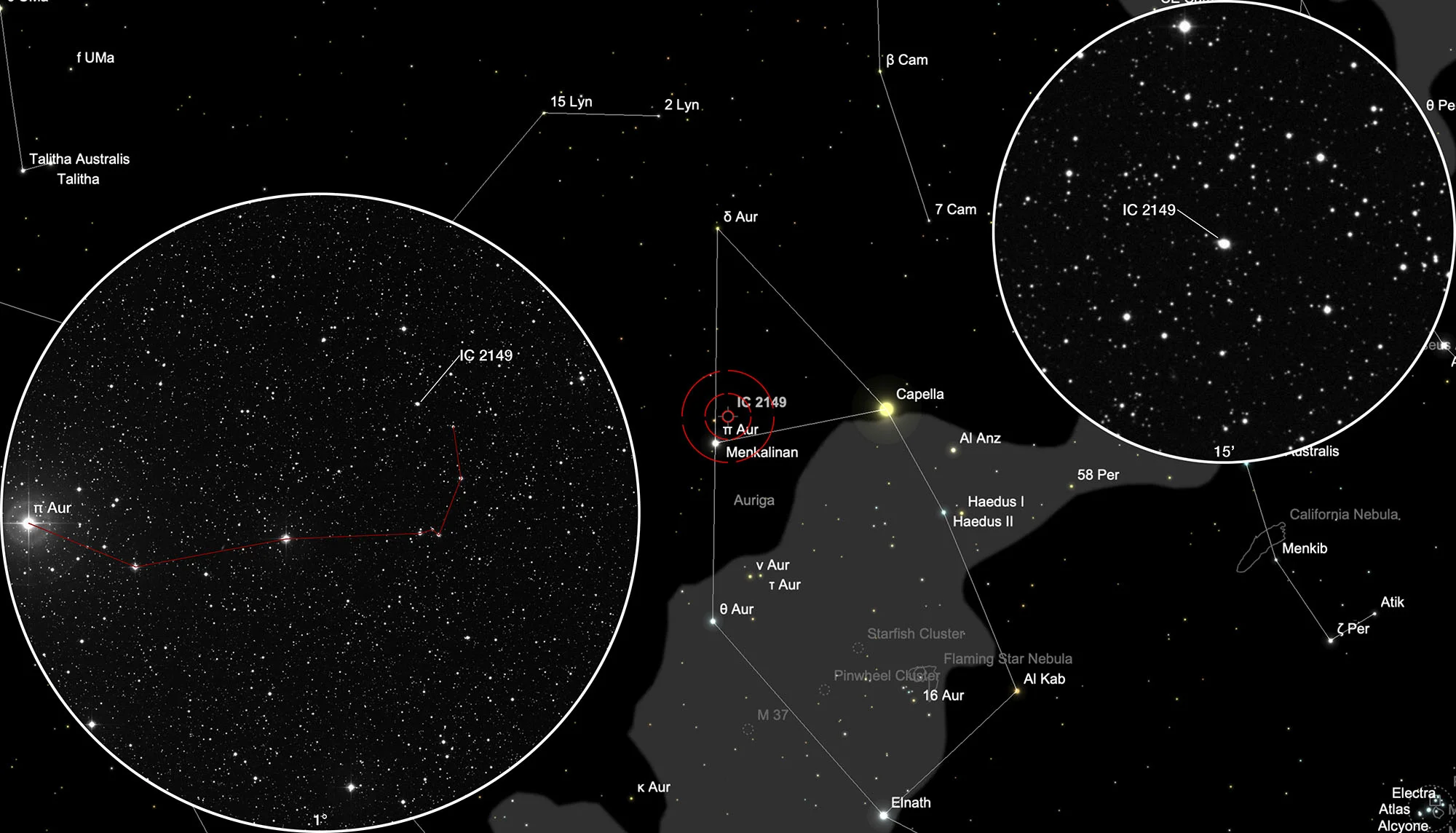Planetary Nebula IC 2149

History
The small planetary nebula IC 2149 was discovered in 1906 by the Scottish-American astronomer Williamina Fleming photographically and visually-spectroscopically with an 8 inch telescope. She was an assistant to Edwart Pickering, an astronomy professor at Harward University. [196, 277]
Physical Properties
The physical structure of this bipolar planetary nebula is not yet completely sure. It could be a bright ring of gas that we are looking at from the side, or it could be a jet extending northeast and hitting a shock front. The distance to this PN is estimated to be about 1.1 kpc. [449, 450]
| Designations | PN G166.1+10.4: IC 2149, PK 166+10.1, ARO 23, VV 26, VV' 37 |
| Right Ascension (J2000.0) | 05h 56m 24s |
| Declination (J2000.0) | +46° 06' 17" |
| Dimensions | 8.5" (optical), 7." (radio) |
| Distance | 1.09 kpc |
| Radial Velocity | -30.7 ± 2.1 km/s |
| Expansion Velocity | < 10.0 (O-III) 20. (N-II) km/s |
| C-Star Designations | AG82 51, BD +46 1067, GCRV 3681, HD 39659, PLX 1357 |
| C-Star Magnitude | B: 11.28, V: 11.59 |
| C-Star Spectral Type | O4 (f), Of(H) |
| Discoverer | FLEMING 1906 |
Finder Chart
The planetary nebula IC 2149 is located in the constellation Auriga, which is best visible from August to May.
